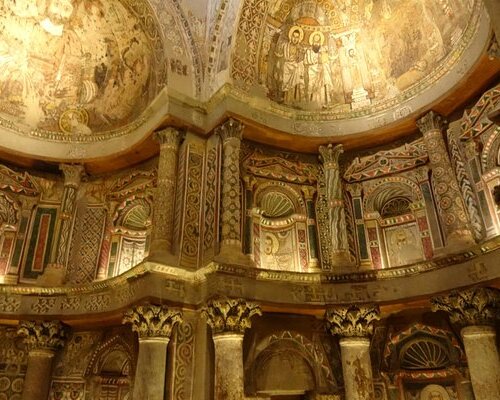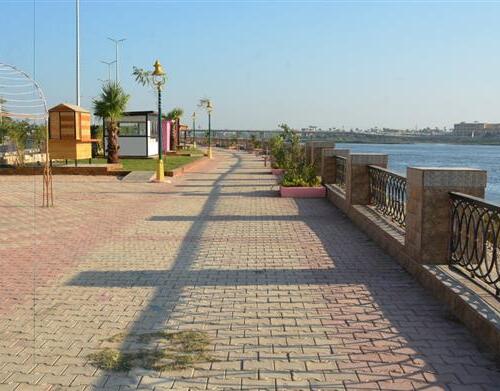No other nation in the world says ‘Welcome’ as often as the Egyptians, and every time, they mean it. While the ancient civilization of Egypt continues to amaze, contemporary Egyptians are equally remarkable.
Sohag Travel Guide
Discover Sohag: Egypt’s Hidden Gem Along the Nile
Tucked away in the heart of Upper Egypt, Sohag is a city where ancient history, spiritual heritage, and authentic Egyptian life converge. Often overlooked by mainstream tourism, Sohag offers a serene and immersive experience for those seeking to connect with Egypt’s rich tapestry beyond the well-trodden paths.
A Tapestry of History and Spirituality
White Monastery (Deir al-Abyad)
Founded in the 5th century by Saint Shenouda, the White Monastery is a testament to Coptic monasticism. Constructed using white limestone from ancient temples, it once housed a vast library and supported a large monastic community. Today, it remains an active place of worship and a symbol of spiritual resilience. Learn more.
Red Monastery (Deir al-Ahmar)
Located a few kilometers from its counterpart, the Red Monastery is renowned for its red brick architecture and intricate frescoes. Dedicated to Saint Pishoy, it offers a glimpse into the artistic and architectural achievements of early Christian Egypt. Learn more.
Abydos Temple
Situated in Al-Balina, the Abydos Temple is one of Egypt’s most significant archaeological sites. Built by Seti I and expanded by Ramses II, it was dedicated to Osiris, the god of the afterlife. The temple complex includes the Osireion, a symbolic tomb associated with Osiris.
Climate and Best Time to Visit
Sohag experiences a hot desert climate, with temperatures soaring above 100°F (38°C) during the summer months. The best times to visit are during the spring (March to May) and fall (September to October), when the weather is milder and more conducive to exploration.
Culinary Delights
Sohag’s cuisine reflects the rich agricultural heritage of the region. Local dishes include:
- Koshari: A hearty mix of lentils, rice, pasta, and fried onions.
- Fattah: A festive dish made of rice, bread, and meat, often served during special occasions.
- Molokhia: A green leafy stew typically served with rice and chicken or rabbit.
Shopping and Souks
Sohag’s markets are a treasure trove for those seeking authentic Egyptian crafts. Visitors can find:
- Handwoven textiles: Akhmim is renowned for its traditional weaving techniques.
- Pottery and ceramics: Locally made and often feature traditional designs.
- Spices and herbs: Sohag’s markets offer a variety of aromatic spices used in Egyptian cuisine.
Travel Tips
- Best Time to Visit: October to April, avoiding the intense summer heat.
- Dress Modestly: Respect local customs by wearing conservative clothing, especially when visiting religious sites.
- Local Transportation: Microbuses and taxis are common; however, arranging transportation through your hotel or a trusted guide is recommended for convenience.
Nearby Attractions
- Dendera Temple: Located near Qena, this temple is dedicated to the goddess Hathor and is known for its well-preserved reliefs.
- Luxor: A city rich in ancient Egyptian monuments, including the Valley of the Kings and Karnak Temple.
- Aswan: Famous for its Nubian culture, Philae Temple, and the Aswan High Dam.
Would you like assistance in planning a customized itinerary for Sohag or exploring specific interests such as historical sites, religious landmarks, or local experiences? Feel free to share your preferences, and I can provide tailored recommendations.
Created On March 18, 2020
Updated On April , 2025
SOHAG Travel Guide



